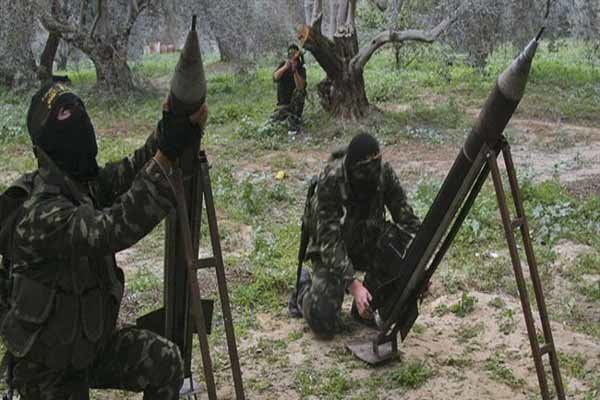The missiles that brought Tel Aviv to its knees

TEHRAN - The situation in Gaza on Sunday, November 11, 2018, was in crisis when a group of Israel Defense Forces (IDF) infiltrated the Gaza Strip but faced the reaction of the Palestinian resistance forces.
Israeli Special Forces assassinated a top Hamas commander, while subsequent Israeli airstrikes to cover the retreat of this force killed five others, including another commander with the Palestinian resistance movement. Although in retaliation an Israeli trooper was seized during the fire exchange, but the Israeli military denied any such incident had taken place.
The high resistance force has caused Zionist authorities not to dare to attack the Gaza Strip. Soon after the incident, Avigdor Lieberman, Israeli Defense minister resigns. Netanyahu, the prime minister of the Zionist regime, has always expressed concern and fear of a comprehensive war in Gaza. Tzipi Livni, former foreign minister of the Zionist regime also acknowledged the failure of the regime against Gaza.
After the incursion in Gaza, the Palestinian resistance group fired more than 400 missiles at Zionist settlements around Gaza, and at the last hour of the ceasefire, the resistance group announced that the range of resistance missiles will continue beyond 40 kilometers if the Zionist airstrike continues.
The latest strike in Gaza by the Zionists was a failed demonstration, and the Palestinian resistance was very united and responsive to the attack.
Fragility of the iron dome has become more obvious
The collapse of the Israeli Iron Dome missile defense system has also made the Zionists more concerned than ever before.
Some analysts believe that the IDF attacked Gaza to kidnap the prominent Hamas figure, and therefore, to pressure Hamas to negotiate, gather information, or, if possible, free two Israeli prisoners detained by Hamas, as well as to stop the ceasefire between the Tel Aviv and Hamas.
However, the Israelis faced defeat with the extraordinary performance of Palestinians.
The retaliation of the resistance group was also the reaction to the normalization efforts of some Arab countries with the Zionist regime. They proved the resistance is alive and dynamic and can disrupt Israeli’s plots in the region including the deal of the century and the new Balfour.
The source of concern for the Zionist authorities in the recent developments is Palestinians use of precision missiles and the ineffectiveness of the Iron Dome system.
The story gets more interesting when you know that every Iron Dome fired by the Zionist regime to combat Palestinian rockets costs $1 million.
The Palestinian resistance, once again, sent the Zionists to seek shelter, and many settlers fled to areas farther away from Gaza.
In the November conflict between the Palestinian resistance and the Zionist regime, despite the massive bombardment of Gaza by the Israeli air forces, the Palestinian resistance rocket hit the Zionist soul.
Israel's Achilles’ heel, the ground force of the Zionists, has failed against the forces that are taking part in the partisan warfare, which was revealed during the 33-day war against Lebanon as well as the wars launched against Gaza.
On the recent issues in Gaza, Abdel Bari Atwan writes: “The right of the people of Palestine, and especially the inhabitants of Gaza, to rejoice in victory because if it weren’t for their heroic resistance, Netanyahu, the Israeli prime minister, would have refused to accept ceasefire. The Israelis only comprehend the language of force. Netanyahu realized that the attack on Gaza would have a severe response by the Palestinian resistance.”
The recent conflict in Gaza was short because Netanyahu and his cabinet realized that they would suffer heavy losses and casualties, and would put their Arab friends in a bottleneck. Therefore, they turned to Egypt for help.
The new resistance has created a new concept in war, which any eye for an eye. The fear and anxiety were not imaginable in Israel when over 400 missiles were fired towards them from Gaza.”
Anyway, it is clear that the Zionists never imagined that their adventure in Gaza would have had a significant impact on the settlers around Gaza and that they would be subjected to heavy Palestinian resistance.
In 2014, it took the Zionists a 51-day war to accept a cease-fire, however, in November 2018, after a 24-hour war, they accepted the ceasefire as the Palestinian resistance has gained strength and has the previous experiences of the war on the enemy.
The Zionists, on the other hand, are not willing to enter the widespread war in Gaza, nor can they take any more missile strikes.
Leave a Comment